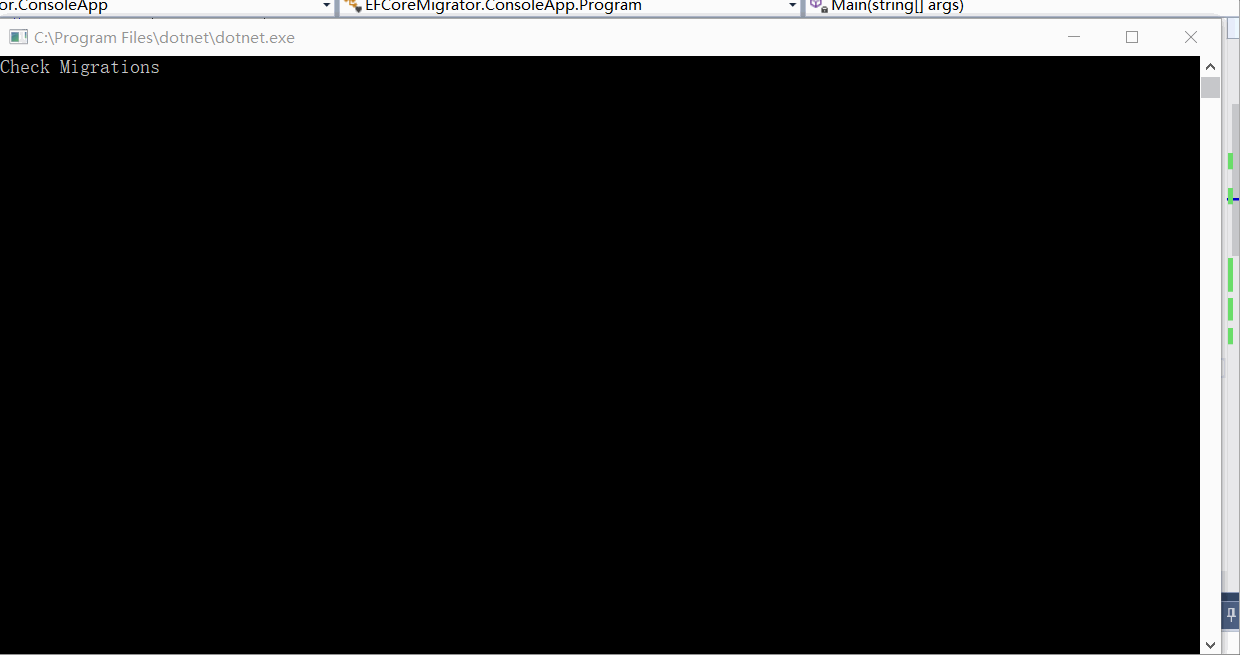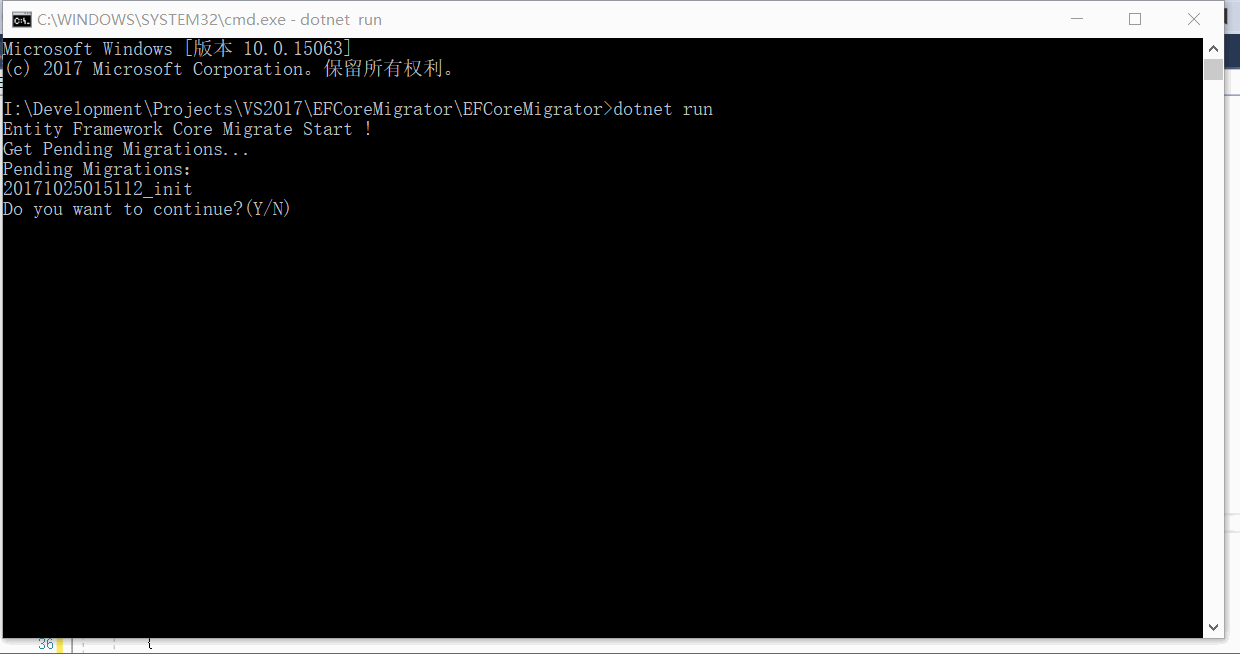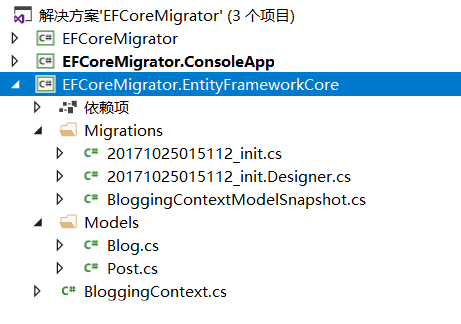Entity Framework Core 2.0 使用程式碼進行自動遷移
阿新 • • 發佈:2018-12-10
一.前言
我們在使用EF進行開發的時候,肯定會遇到將遷移更新到生產資料庫這個問題,前面寫了一篇文章介紹了Entity Framework Core 2.0的入門使用,這裡面介紹了使用命令生成遷移所需的SQL,然後更新到生產資料庫的方法。這裡還有另一種方法,就是利用EF Core自身所提供的方法來進行遷移。
二.API說明
這些方法都是DatabaseFacade的擴充套件方法,我們常使用的DbContext.Database就是DatabaseFacade型別。
GetMigrations獲取所有遷移
/// <summary> /// Gets all the migrations that are defined in the configured migrations assembly. /// </summary> public static IEnumerable<string> GetMigrations([NotNull] this DatabaseFacade databaseFacade)
GetPendingMigrations獲取待遷移列表
/// <summary>
/// Gets all migrations that are defined in the assembly but haven't been applied to the target database.
/// </summary>
public static IEnumerable<string> GetPendingMigrations([NotNull] this DatabaseFacade databaseFacade) GetAppliedMigrations獲取執行了遷移的列表
/// <summary>
/// Gets all migrations that have been applied to the target database.
/// </summary>
public static IEnumerable<string> GetAppliedMigrations([NotNull] this DatabaseFacade databaseFacade) Migrate執行遷移
/// <summary> /// <para> /// Applies any pending migrations for the context to the database. Will create the database /// if it does not already exist. /// </para> /// <para> /// Note that this API is mutually exclusive with DbContext.Database.EnsureCreated(). EnsureCreated does not use migrations /// to create the database and therefore the database that is created cannot be later updated using migrations. /// </para> /// </summary> /// <param name="databaseFacade"> The <see cref="T:Microsoft.EntityFrameworkCore.Infrastructure.DatabaseFacade" /> for the context. </param> public static void Migrate([NotNull] this DatabaseFacade databaseFacade)
三.實現自動遷移
我們可以利用上面的方法,讓程式在啟動的時候檢查是否有待遷移,如果有那麼執行遷移。這裡以一個.NET Core 控制檯應用程式作為示例:
1.定義一個檢查遷移的方法
/// <summary>
/// 檢查遷移
/// </summary>
/// <param name="db"></param>
static void CheckMigrations(BloggingContext db)
{
Console.WriteLine("Check Migrations");
//判斷是否有待遷移
if (db.Database.GetPendingMigrations().Any())
{
Console.WriteLine("Migrating...");
//執行遷移
db.Database.Migrate();
Console.WriteLine("Migrated");
}
Console.WriteLine("Check Migrations Coomplete!");
}2.在程式啟動時呼叫
static void Main(string[] args)
{
using (var db = new BloggingContext())
{
//檢查遷移
CheckMigrations(db);
...
}
}執行:

四.製作一個單獨的遷移工具
上面的方法需要我們每次在應用程式啟動的時候都去檢查遷移,我們也可以單獨製作一個控制檯程式來進行遷移的更新,這樣只要在更新遷移的時候放到伺服器上執行一下就行 了。
我們在實際使用中,建議將EntityFrameWork Core單獨作為一個專案
程式碼如下:
static void Main(string[] args)
{
Console.WriteLine("Entity Framework Core Migrate Start !");
Console.WriteLine("Get Pending Migrations...");
using (var db = new BloggingContext())
{
//獲取所有待遷移
Console.WriteLine($"Pending Migrations:\n{string.Join('\n', db.Database.GetPendingMigrations().ToArray())}");
Console.WriteLine("Do you want to continue?(Y/N)");
if (Console.ReadLine().Trim().ToLower() == "n")
{
return;
}
Console.WriteLine("Migrating...");
try
{
//執行遷移
db.Database.Migrate();
}
catch (Exception e)
{
Console.WriteLine(e);
throw;
}
}
Console.WriteLine("Entity Framework Core Migrate Complete !");
Console.WriteLine("Press any key to exit !");
Console.ReadKey();
}執行效果:


